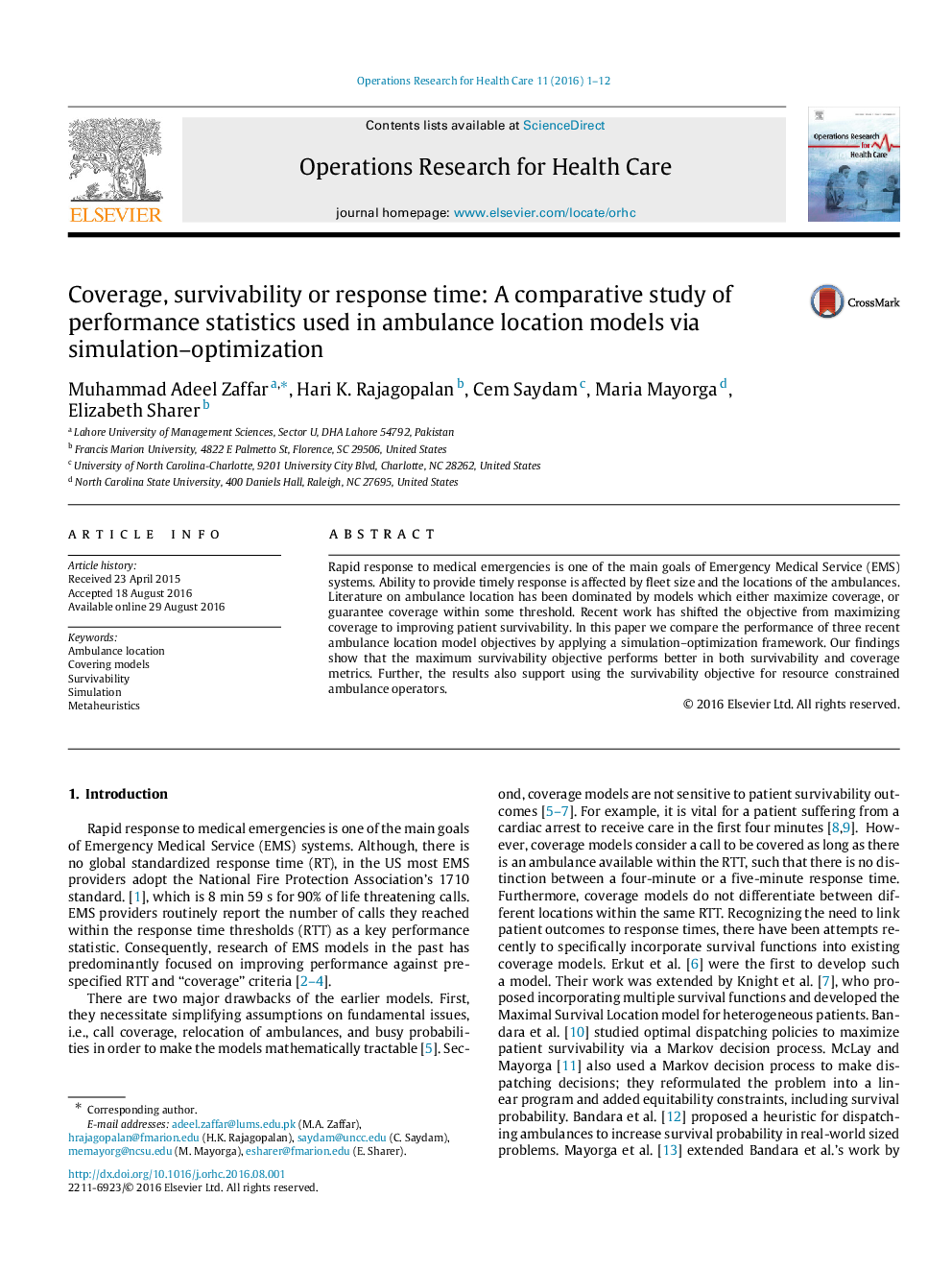| Article ID | Journal | Published Year | Pages | File Type |
|---|---|---|---|---|
| 5128323 | Operations Research for Health Care | 2016 | 12 Pages |
Rapid response to medical emergencies is one of the main goals of Emergency Medical Service (EMS) systems. Ability to provide timely response is affected by fleet size and the locations of the ambulances. Literature on ambulance location has been dominated by models which either maximize coverage, or guarantee coverage within some threshold. Recent work has shifted the objective from maximizing coverage to improving patient survivability. In this paper we compare the performance of three recent ambulance location model objectives by applying a simulation-optimization framework. Our findings show that the maximum survivability objective performs better in both survivability and coverage metrics. Further, the results also support using the survivability objective for resource constrained ambulance operators.
